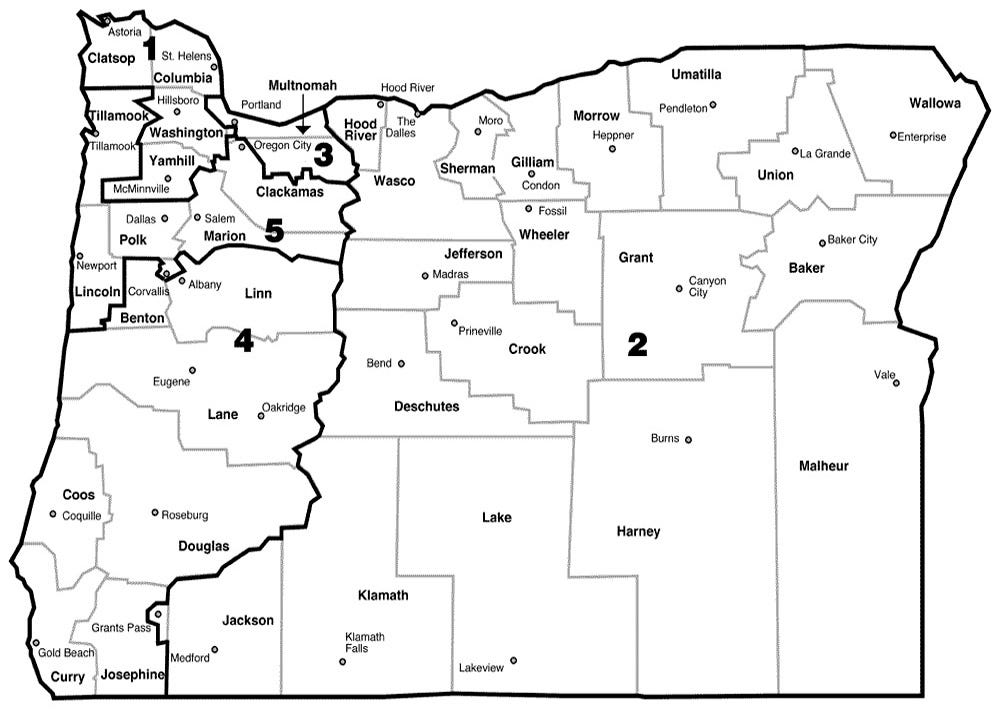Don't miss your chance to shape Oregon's political future
What you need to know about redistricting
Today, after a long delay, the Census Bureau released district-level census data, finally kicking off our decennial redistricting process. Contrary to what you may have heard, citizens play a critical role in this process. With the late data, we face an accelerated timeline to complete redistricting, meaning that the public must submit their input before September 13 to receive consideration.
Timeline. With COVID-19 disrupting the census, the Oregon Supreme Court narrowed the window for redistricting. Legislative staff will first put the data into a useable format and then release it to the public around August 23. Then a Redistricting Committee made up of state legislators will take a look at it over the two following weeks and hold legislative hearings for citizen input from September 8-13. From September 13-20, the Redistricting Committee will deliberate on the proposed new maps. The Legislature will return for a special session from September 20-24.
If all goes well, we’ll deliver those approved maps to the Supreme Court on September 27. The Supreme Court may then hear any objections to the maps. If the State Legislature fails to come to an agreement, the Secretary of State will draw State House and Senate districts, while a panel of judges appointed by the Chief Justice of the Oregon Supreme Court will complete congressional redistricting.
State v. Federal Redistricting. The Legislature completes redistricting for both state legislative seats and districts for the US House of Representatives. While state redistricting will result in the same number of districts – 30 Senate and 60 House, the addition of a new Congressional district raises the stakes for the federal task at hand. The Cook Political Report scores only one of Oregon’s current 5 districts – Rep. Peter DeFazio’s 4th CD – as competitive. The political composition of our federal delegation to the House may change with a 6th district – which political forecasters think could result in a 5-1 map (five “safe” seats for Democrats and one for Republicans), 4-2 map, or 4-1-1 map (one district remaining competitive).
How do we draw districts? Oregon law has five criteria for redistricting. Districts must -
(a) Be contiguous;
(b) Be of equal population;
(c) Utilize existing geographic or politicalboundaries;
(d) Not divide communities of common interest; and
(e) Be connected by transportation links.
There’s no particular weight given to any of the last three criteria, because we often have to tradeoff among them to get reasonable districts with the right population numbers. Under Oregon law, redistricting specifically may not consider where current legislators live or the political mix in each district.
How to be heard. The Redistricting Committee received a lot of good testimony during the 2021 Long Session. To be considered, testimony should address the legal factors the Legislature is allowed to consider. Here are some things to think about as you weight how best to engage:
Describe your community, how it has grown, and how the Legislature should draw the lines to ensure your community isn’t divided.
Explain how the current district boundaries divide your community or keep it together.
Tell legislators what makes your community unique and why it is important that your community be recognized and kept together.
Give examples of how your community has worked together to advocate for common interests or important services.
The Legislature has even set up an online tool to allow people to draw their own maps at https://oregonlegislature.gov/redistricting. Click on “Redistricting Software Information.” The same page has information about how to submit testimony.
In conclusion, the voices of the people are important in redistricting. Citizen input guides the Committee in drawing maps that help their elected legislators better represent them. If you haven’t participated in the redistricting process before, now is the time. With a new Congressional district, the stakes are even higher than usual.
Marty Wilde represents House District 11 in the Oregon State House.





What's missing from the criteria is making a district competitive. Until large multi-seat districts filled by proportional representation is implemented there will be an incentive to gerrymander. Unfortunately, it will take an act of Congress for Oregon to have multi-seat congressional districts. But the Oregon legislature could implement it for state offices.